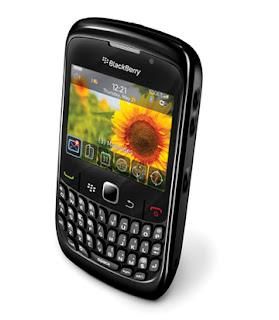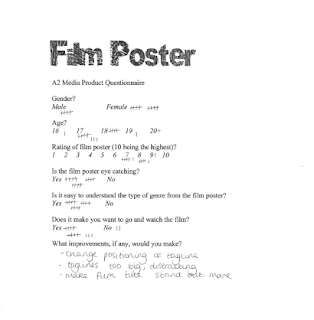The media has its own different forms, codes and conventions to construct reality both in a positive outlook and negative. The codes and conventions are what allow the audience to recognise a genre and understand the storyline, because our genre was social realist drama we had to research into the typical codes and conventions used. In order to do this we had to analyse films that fall under this genre so we could identify the forms and codes used so we were knowledgeable when we came to produce our final products. This genre is very strict in how the characters are portrayed and it revolves around stereotyping and how society creates social class, we found that costume played a big part in this and that simple items of clothing such as a hoodie would create a very strong stereotype and status amongst the characters. We also found that all the films used conventions of drug use, gun crime and gangs and were filmed in urban areas usually in working class suburbs. Another convention that came to our attention was the majority of the filming and scenes that occurred at night or during the evening, this creates a sinister approach especially around the gangs and the idea of partying and youth. This is emphasised by the fast paced edit which creates a thrill and excitement for the audience, the fast pace and constant action surrounding the storyline creates drama and often a happy ending isn't the case.
Within our group we all analysed our own choice of teaser trailers for primary research into the construction to give us an idea of the length a teaser should be and the amount of information shared, I think we challenged this last point by including much more of the storyline then most teasers do. However Adulthood and Kidulthood also did this, I there was not time for the characterisation of the characters in both of the teasers because of the fast edits and shot changes but I did have more information fed to me about the storyline then 500 Days Of Summer which left me with little if not no information to the actual plot. We wanted to challenge the structure of a teaser trailer and entice our audience by giving them a small introduction to our main character by trying to get our audience to relate to him. This was a brave move because we could be in danger of giving away too much information and our audience is left with no anticipation or excitement. The male protagonist was of importance and is a usual connotation of many genres. 'Steon' is caught up in a world of crime and drugs which has lead to rejection by society, with a lack of job he has no other way to pay for medicine needed for his sick girlfriend so the only way is through drug dealing. However this leads him into a life that he cannot escape. This type of character often has a depressive lifestyle that either the audience can relate to in their own ways or create the emotion of sympathy for him. Our trailer agrees with the stereotypical forms and conventions of a social realist drama by portraying the economic hardship that the characters have to face and the concept that they have no option but to turn to violence, gangs and drugs as a way to cope. I think it is important for the audience to know about the characters especially because of this being a fairly new genre with what I believe to have a much smaller target audience than that of a horror or comedy, one idea we had was that because the audience have this knowledge of the characters and the background it could be used as a promotional tool because unlike other films social realist dramas don’t always have well known actors so I think it is a harder market of genre. By doing this though it allows emphasises on the identity of the genre. The consumers watching our film will be familiar with Noel Clarke who was the director of ‘Adulthood’ their expectations will need to be matched which means constant reference to the reality of the lives portrayed, level of crime, drugs and the emphasise on the action throughout.
Breakdown of ancillary products:
- Film poster: to advertise the product
- Magazine front cover: to sell the product
- Teaser trailer: to gain interest and audience's attention to the product
Film Poster:
Our film poster is effective and is recognisable in its genre, similar to 'Adulthood' and '4,3,2,1' we used colour tone to create tension and portray the hardship and reality of the lives of the characters in an almost depressing manner. It also gives off the impression of being in a city with the iron fencing and shabby effect with the grey tinting which is often a metaphor used to describe city life. We have taken into account the layout of typical film posters and the importance of mise en scene. The positioning of characters was important but also the location. We have placed our characters in order of importance, with the main character ‘Steon’ in the foreground and the muggers in the background. Here you have connotation of a group of males in hoodies and tracksuits which creates the stereotype of gang culture, or in this case the idea of the muggers following in the shadows close behind portraying the danger surrounding our main character. I have shown stereotypical symbols of teenage rebellion with the gun in Steon's hands close to his body, this is unseen by the audience at a first glance but is a strong symbol and represents the problem within teenage society and the controversial stereotypes surrounding them today. Adulthood has used a similar technique with the baseball bat lying on the ground; it is not what your eyes are first drawn to but still has a hard hitting effect and represents the danger and problems youth/teenagers face. It is clear from previous film posters that persuasion is a key technique used to gain audience interest, in Adulthood the director’s name is used as a promotion tool because he is instantly known for his work in this genre. We have used the conventional ideas of including directors, producers and key actors name on the poster and film company logos, this has finished off the film poster and kept it to a professional standard.
Magazine Front Cover:
My research into magazine front covers taught me that it was a lot more effective to use a single front on shot of the main character usually a mid shot that filled the majority of the frame. This single image has to be powerful enough to promote the film which is why we have chosen an intimidating image of our main character, the directness and body language is powerful and the use of the gun is a convention of the genre. The colours we chose to use were to keep in with the lighting of the image as no to distract too much away from the image. From the magazine front covers I previously analysed I found colour theme was an important code. The types of articles tend to be based around other newly released films and often powerful vocabulary and adjectives such as 'amazing' are used as a promotional tool and to make the audience 'feel in the know'. We have achieved this by using 'latest' and cover stories that we feel would appeal to our audience. We decided that because of the specialised genre of our film it would feature in an independent magazine like Little White Lies, however we decided to use conventions of magazine like Empire and Total Film where they use large amounts of text overlapping the image unlike Little White Lies which is more creative and lets the image speak for itself.
Teaser Trailer:
As a group we watched Adulthood and analysed the conventions used in the teaser trailer, it was fast paced with lots of editing. Stereotyping plays a major role within the storylines of this genre, the types of clothing our characters wear and the make of them is very important because we needed to ensure we created a correct stereotype and social class. Adidas tracksuits, bodywarmers and hoodies we found were common clothing choices in Adulthood and props such as guns, money, drugs and weapons were featured throughout. Our title scene features three of these props as shown below and I believe confirms the genre straight away.

We created status amongst our characters through their clothing, for example 'Boss' wore a smart suit and was filmed in a nice car to create a sense of wealth and importance whereas the muggers and Steon wore casual tracksuits, hoodies and hats all in dark colours a connotation that they have something to hide. These items of clothings all represent a lower social class and the surroundings and locations we chose to film in emphasise this.
By using the props of fake guns and drugs, and nice cars you get this gang culture element and it allowed us to portray our characters and their status within the films without having to rely on just the types of clothing and the storyline to do this.
My primary research taught me how cross media campaigns work, the same fonts are usually used throughout all three products and similar imagery for both the film poster and magazine cover. We decided on our title font for 'Skrilla' because it is distorted and looks like grafiti. This font was then used on our film poster and magazine front cover to show continuity and we used the same tagline in each product. We used the same characters but chose not to use the same photos for the film poster and front cover because we found they both worked in different ways. I think this was a good choice because the image we used for the film magazine was intimidating similar to the image used for the Iron Man issue for Empire.
Overall from this project I have taken away with me skills in final cut and developed on my Photoshop skills. It has also helped me work both independently and within a group, I believe that our main product and ancillary task was a success and I am happy with the final outcome. I do however think there are areas in which we could have improved on, if we had managed our time better and been stricter on the deadlines we set ourselves. The ancillary projects and some aspects of the research would not have been as rushed if we had constructed our time better. I enjoyed the day of filming and even though that was fairly rushed too I am happy with how it came together. If we had the chance to redo the filming or spend more time on the editing we would have used a wider range of shots and variation in location to ensure it didn’t look like a short story and also to keep in with the convention of the fast pace and edited shots. We defiantly needed to communicate better as a group and perhaps even have made more time to do the filming in however I am fascinated by the positive feedback we got from both our target and accidental audience. I think in ways of promotion and cross media advertising we used the codes and conventions and have portrayed a deep understanding of advertising, production and new media and challenged the concept of a teaser by using it as a way of introduction to the character which we wanted to do so the audience could try and relate to him. I think as a group we understood which codes and conventions we needed to follow in order to ensure our genre was obvious. We have developed on these conventions throughout our media products and challenged forms of real media products.















































